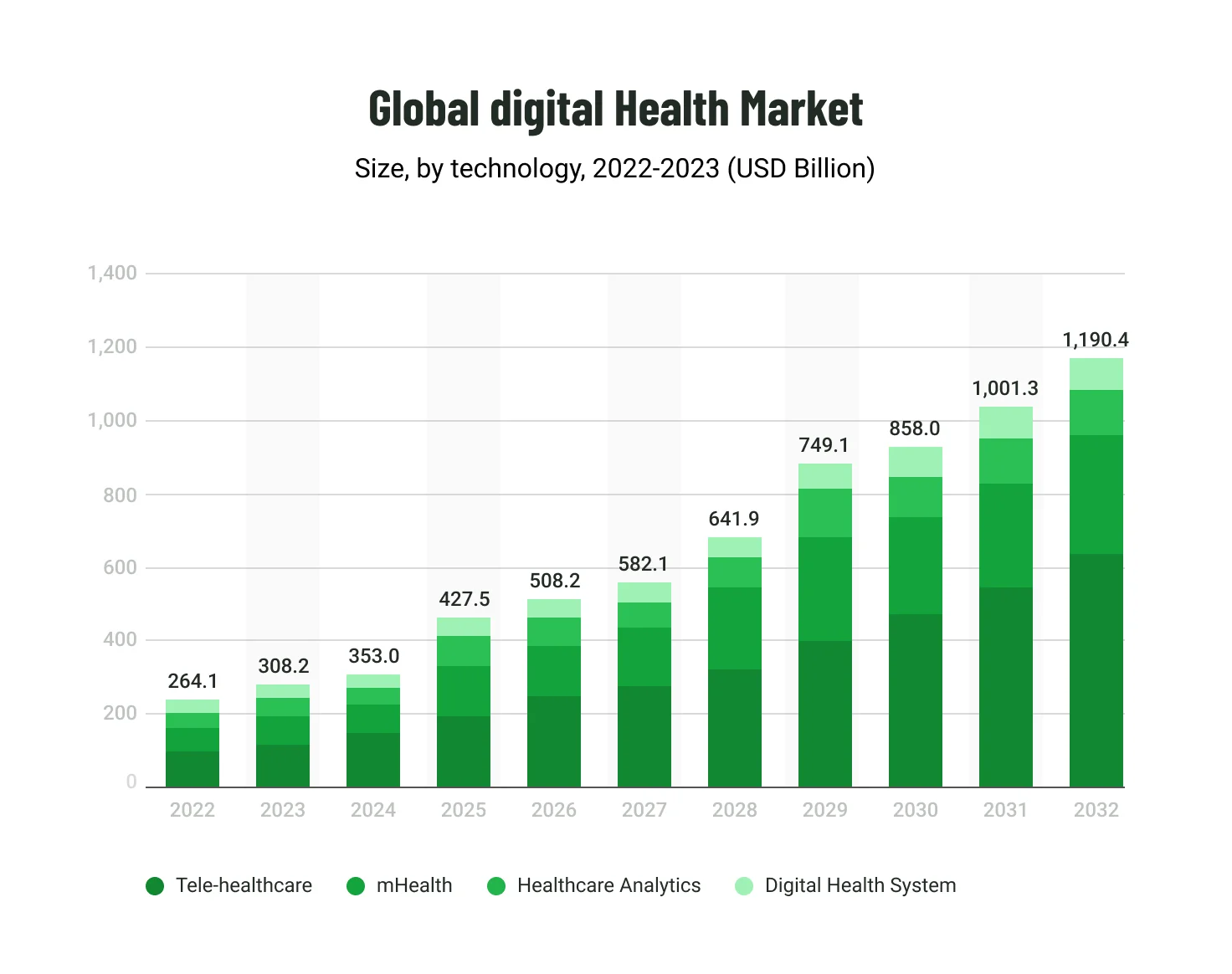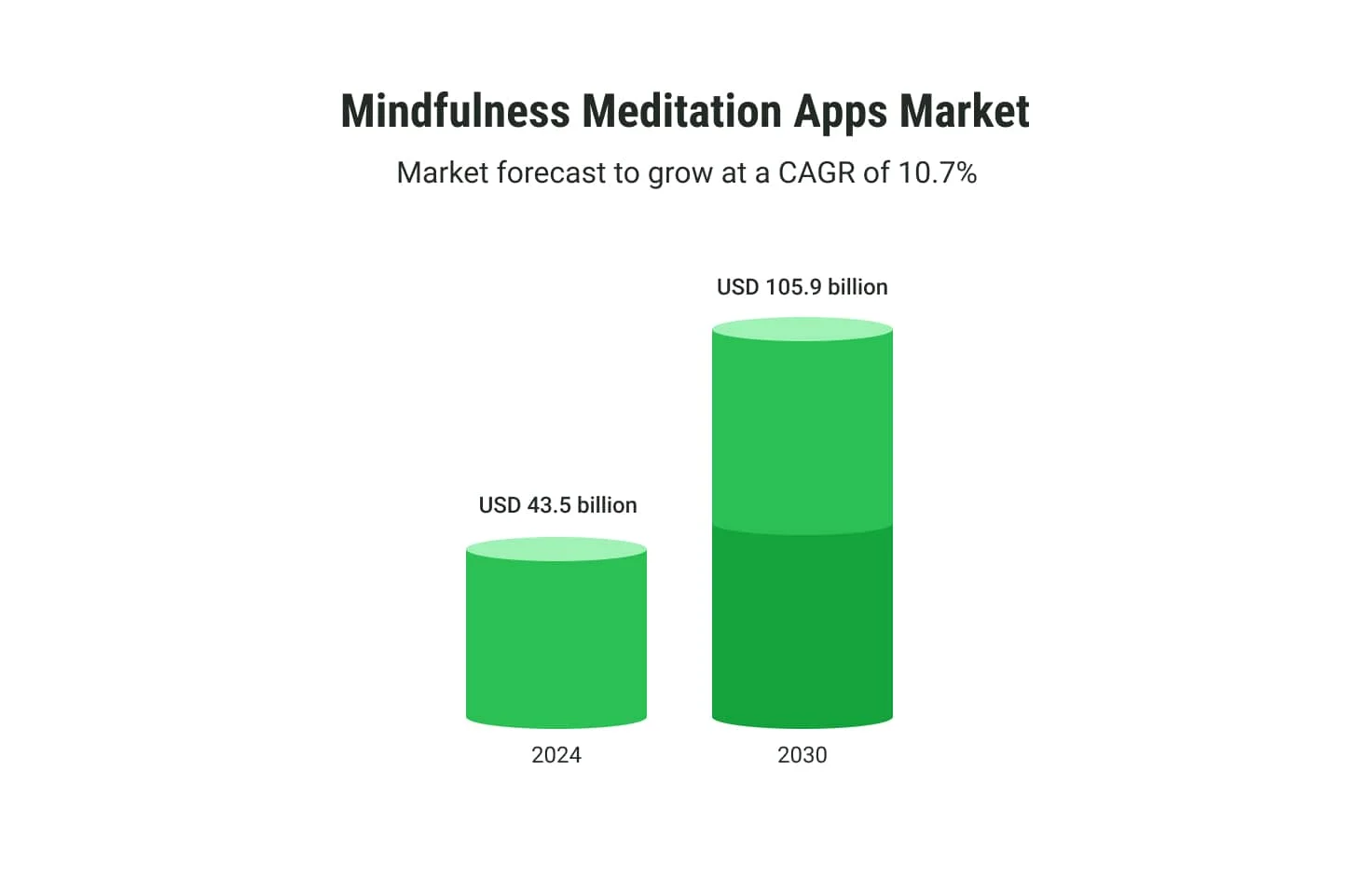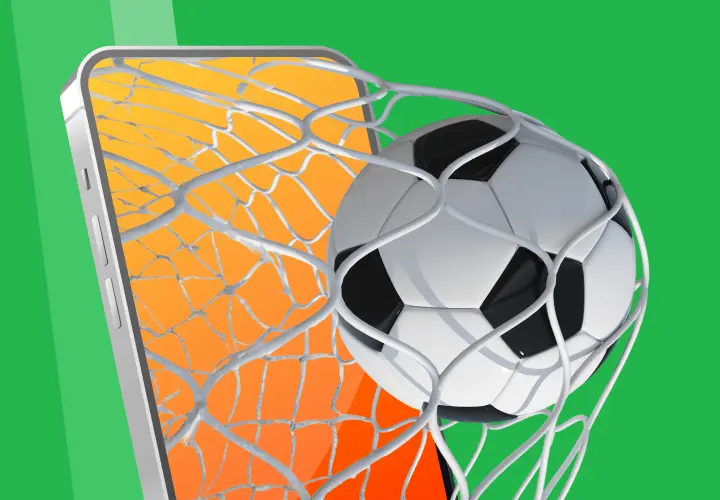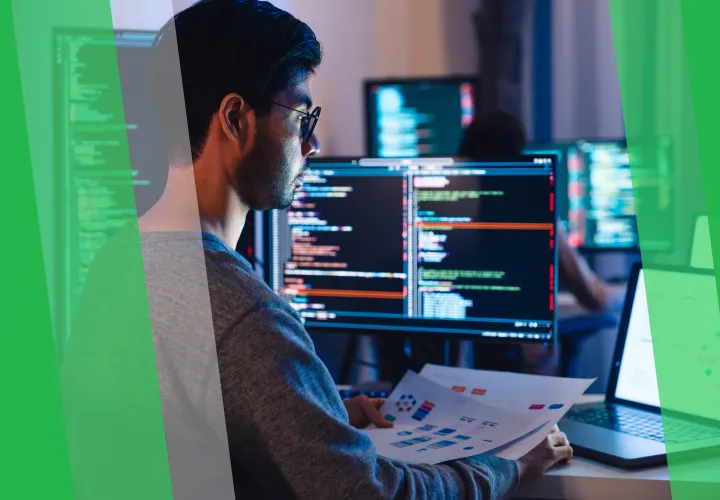Ultimate Guide on How to Develop a Wellness App in 2025
Table of contents
- Key Wellness App Categories and Their Popular Features
- Fitness apps
- The most common features the users are interested in are the following:
- Top fitness apps 2025
- Nutrition apps
- Certain core features of the diet and nutrition applications:
- Top nutrition apps 2025
- Mental health apps
- The features of mental health apps
- Top mental health apps 2025
- Meditation and mindfulness apps
- Top features of the meditation and mindfulness apps:
- Top meditation and mindfulness apps 2025
- Sleep tracking apps
- The key features of a top sleep-tracking app include the following:
- Top sleep tracking apps 2025
- Core Wellness App Development Stages
- Decide on the wellness app type and platform
- Inception stage
- Design stage
- Development stage
- Testing stage
- Preparing technical documentation
- Release stage
- User behavior monitoring and hypothesis testing
- Maintenance and support
- Bottom Line
The demand for wellness applications is constantly expanding. Increased smartphone usage, growing interest in health and wellness, accessibility, and personalization 一 all contributed to wellness apps being the most significant segment of the digital health market.

Indeed, the global digital health market is growing and is projected to exceed $1.190 billion by 2032. These impressive figures once again demonstrate that wellness apps are worth investing in. However, what are wellness apps? How can you develop a well-being solution that would attract users? Based on our experience and expertise in building solutions for the healthcare industry, we are ready to share our insights.
Key Wellness App Categories and Their Popular Features

Wellness apps are mobile applications designed to help users improve their physical and mental health and well-being. Their ultimate goal is to help users lead healthier, more balanced lives by providing them with the tools and resources they need to achieve their health and wellness goals. The most popular wellness apps encompass fitness and nutrition tracking, meditation and mindfulness exercises, mental health support, sleep tracking, and other tools for holistic well-being.
Fitness apps
Fitness apps are mobile applications designed to help users improve their physical fitness and achieve their fitness goals.
As more people recognize the importance of regular exercise and a healthy lifestyle, the market observes an increased interest in fitness app development. According to statistics, fitness apps were downloaded more than 850 million times in 2023.
The most common features the users are interested in are the following:
- Personalized workout plans
- Holistic health tracking
- Wearable device integration
- Nutrition guidance and meal planning
- Mindfulness and recovery features
- Tracking of physical activity
- Workout routines
- Step tracking
- Calorie counting
- Progress monitoring
- AI-powered insights and recommendations
- Community and social support
If you want to stand out from the competitors, consider other valuable features: personalized recommendations and guidance based on the user's fitness goals, level of fitness, personal preferences, and access to communities of like-minded individuals working towards similar fitness goals.
Top fitness apps 2025
| Fitbit | Recently acquired by Google to be part of the company's hardware division. Known for its popular fitness trackers. |
| MyFitnessPal | One of the most popular calorie trackers, with a massive database of food products. |
| Strava | A popular fitness app with the cycling community with a competitive King of the Hill mode. |
| Peloton | Seller of expensive cardio equipment and exercise live streams that can be followed at home. |
| AllTrails | Another route planning app used for outdoor activities such as hiking, climbing, and snow sports. |
| FitOn | A fitness app that prides itself on offering free workout and meditation sessions. |
| BetterMe | An all-in-one health, fitness and wellness app that acts as a virtual health coach. |
| Sweat | A fitness app built for women with an extensive library of female trainers and workouts. |
| Zwift | A massively multiplayer online cycling game that lets you explore virtual worlds at home. |
| Leap Fitness | Publisher of the most popular free fitness apps on iOS and Google Play. |
| Sweatcoin |
An app that rewards users for walking with sweatcoins, which can be exchanged for real-world goods. |
Nutrition apps
45% of people globally are trying to lose weight. Nutrition apps focus on helping users track their food intake and monitor their nutrient intake. A healthy diet is essential for weight loss, so nutrition apps are the second most popular category of wellness applications.
Certain core features of the diet and nutrition applications:
- Personal accounts
- Smart food logging
- Macronutrient tracking
- Calorie counting
- Meal planning
- Statistics
- Personalized recommendations
- Personalized nutrition plans
- Recipe integration and meal planning
- Grocery ordering integration
- Personalized recommendations & insights
- Personalized supplement recommendations
- Push notifications
- Mindful eating tools
- Gamification and challenges
- Community and social features
- Integration with wearables and health apps
Nice-to-have features include multi-device synchronization, the opportunity to join communities, and blogging to share the latest food and nutrition research, news, and health tips.
Top nutrition apps 2025
| MyFitnessPal | Track your meals, count calories, and get personalized insights to achieve your weight goals. |
| Lose It! | Set a goal and track your progress with this calorie counter and food diary app. |
| Cronometer | Track your diet, nutrition, and health with this comprehensive app. |
| Yazio | Achieve your weight loss goals with this calorie counter and intermittent fasting app. |
| Fooducate | Learn about your food with this app that decodes nutrition labels and helps you choose healthier options. |
| Lifesum | Create healthy habits with this app that offers personalized diets and recipes. |
Mental health apps
Mental health applications are designed to help users manage and improve their mental health and well-being. Although mental health issues have always been a big part of human life, the COVID-19 pandemic and strict quarantine measures gave impetus to mental health app development to become more relevant than ever, making more people turn to these apps to find support and assistance.
According to the World Health Organization, mental disorders affect one in four people. Fortunately, society is becoming more and more conscious, therapy is more accessible, and prejudice around mental health problems has disappeared, resulting in the rise of digital mental health.
The features of mental health apps
The list of features can vary depending on the app, but some standard features include the following:
- Creating a profile
- AI-powered chatbots and virtual assistants
- Mood tracking and analytics
- Education and resources
- Personalized goal setting and progress tracking
- Personalized recommendations
- Cognitive Behavioral Therapy (CBT) and other evidence-based therapies
- Exercises and techniques to cope with psychological conditions
- Journaling and self-reflection tools
- Self-monitoring
- Community forums and peer support
- Crisis support and resources
- Emergency support
- Notifications and reminders
- Gamification and motivational elements
- Mindfulness and meditation integration
- Telehealth integration
- Integration with wearables and health trackers
To make your application more professional and appealing, consider implementing telehealth features and more opportunities for doctor-patient collaboration.
Top mental health apps 2025
| Calm | Calm is a meditation and sleep app that offers guided meditations, sleep stories, breathing programs, and relaxing music to help users reduce stress and anxiety and improve sleep quality. |
| Headspace | Headspace provides guided meditations, mindfulness exercises, and sleep sounds to help users manage stress and anxiety and improve focus. |
| BetterHelp | BetterHelp is an online therapy platform that connects users with licensed therapists for virtual counseling sessions. |
| Talkspace | Talkspace offers online therapy and psychiatry services, allowing users to communicate with licensed therapists through text, audio, and video messages. |
| MindDoc | MindDoc is a mood-tracking app that helps users monitor their emotional well-being and identify mood patterns. |
| AbleTo | AbleTo provides tools and resources for managing stress, anxiety, and depression, including guided meditations, coping mechanisms, and peer support. |
Meditation and mindfulness apps
The National Center for Complementary and Integrative Health discovered that 18 million U.S. adults (8%) use meditation to enhance their mental health. Those surveyed reported that meditation is a working tool to improve concentration, mental health, and creativity. That's why the meditation app market size is on the rise and expected to grow from $118.8 million in 2024 to $218.7 million by 2030, according to GlobalNewswire.

Meditation and mindfulness apps provide users with guided meditation and mindfulness exercises to help them improve their mental well-being. Every app is unique and is based on individual concepts, but there are several features that every app should have to provide the best user experience.
Top features of the meditation and mindfulness apps:
- User profiles
- Personalized meditation recommendations
- Adaptive meditations
- Interactive mindfulness exercises
- Guided meditations
- Mindfulness coaching and guidance
- Mindfulness exercises
- Breathing techniques
- Personalized soundscapes and music Favorite sounds
- Sleep aids
- Progress tracking and insights progress tracking
- Daily reminders and push notifications
- Offline playback
- Offline content and downloadable meditations
- Community features
- Personalized reminders and notifications
- Gamification and challenges
- Integration with other wellness apps
- AR/VR integration
- Biofeedback integration
- Integration with wearables and health trackers
Top meditation and mindfulness apps 2025
| Insight Timer | A free meditation app with a vast library of guided meditations, talks, and music from various teachers and traditions. It also features a timer for self-guided meditation practice. |
| Ten Percent Happier | Offers guided meditations, talks, and courses on mindfulness and meditation based on the teachings of Dan Harris and other experts. |
| Smiling Mind | A non-profit meditation app offering free mindfulness programs for all ages, focusing on young people and schools. |
| Breethe | Provides guided meditations, breathing exercises, music, and sleep stories to help users relax, de-stress, and improve sleep. It offers personalized recommendations based on user preferences. |
| Simple Habit | Offers 5-minute guided meditations for busy people, designed to address various needs, such as stress relief, focus, and sleep. |
| Aura | Provides personalized meditations based on your mood and preferences, using AI to curate the best experience for you. |
Sleep tracking apps
The primary purpose of sleep apps is to help users monitor and analyze their sleep patterns. Some apps offer relaxing sounds to help users fall asleep, tutorials for relaxing evening activities like yoga or meditation, and coaching with sleep experts.
Sleep tracking apps can provide various features to help users improve their sleep quality.
The key features of a top sleep-tracking app include the following:
- Relaxing music and sounds
- Soundscapes and white noise generation
- Smart alarms with sleep stage optimization
- Personalized sleep reports and insights
- Personalized sleep coaching
- Sleep stories
- Sleep stage tracking
- Sleep journaling and mood tracking
- Sleep apnea detection and snoring analysis
- Cognitive Behavioral Therapy for Insomnia (CBT-I) integration
- Meditation and guided breathing
- Mindfulness and relaxation exercises
- Sleep advice and tips
- Data analysis
- Sleep environment analysis
- Integration with smart home devices
- Integration with health and fitness trackers
- Wearable device integration
- Biofeedback integration
Top sleep tracking apps 2025
| Sleep Cycle | Analyzes your sleep patterns using sound analysis and helps you wake up during your lightest sleep phase feeling more refreshed. It also provides detailed sleep statistics and insights. |
| Pillow | An automatic sleep tracker for Apple Watch and iPhone that monitors your sleep stages, heart rate, and audio recordings to provide detailed sleep analysis and personalized insights. |
| SleepScore | Uses sonar technology to track sleep without requiring wearables. It provides detailed sleep stage analysis and personalized advice and integrates with smart home devices. |
| SnoreLab | Records and analyzes your snoring sounds, helping you identify potential causes and track the effectiveness of snoring remedies. |
| Sleep as Android | A feature-rich sleep tracking app for Android that offers sleep cycle analysis, smart alarm, snoring detection, sleep talking recording, and integration with wearables and smart home devices. |
Core Wellness App Development Stages
Many wellness applications are available in app stores, but not all of them are of great interest to users. Lack of marketing, poor user experience, technical issues, and pricing are just a few reasons applications fail. Creating a successful wellness app requires a strategic and meticulous approach.
Let's look at the steps necessary to develop a wellness app.
Decide on the wellness app type and platform
The first step is conducting in-depth market research and identifying your target audience. Thanks to the analysis, you can determine the niche for your future application and understand what type of platforms and devices a particular user category prefers. For example, Gen Z are the most active users of mobile apps, while 71% of boomers use laptops or PCs daily and prefer to consume content using these devices.
Consider not just demographics but also emerging technologies. For example, while mobile remains dominant, explore opportunities in wearable integrations, AR/VR experiences, or even AI-powered personalized wellness platforms. Understanding user preferences for these technologies will be crucial for long-term success.
It's estimated that a significant percentage of apps fail due to a lack of proper market research, with some studies suggesting that this figure could be as high as 70-80%.
Inception stage
Having determined the direction of development, you should pay close attention to the wellness application's idea and identify its unique selling proposition (USP), core purpose, and features that will differentiate it from existing wellness apps. Wellness apps, like any others, are created to solve specific user problems and meet their needs. That's why it's essential to define clearly what benefits your app will bring and how it will stand out from the competition.
To ensure your app's success, it's not enough to identify a niche; define the unique way in which your app will address specific needs. Users are looking not just for apps but also for solutions that meet their requirements.
Imagine that your wellness tracker doesn't just count steps but offers a personalized workout program based on analysis of the user's physical activity data, age, and goals. This is no longer just a counter but a personal fitness trainer who helps achieve specific results.
What problem does it solve, and how does it improve users' lives? This forms your core value proposition. According to statistics, over 80% of users are willing to pay for wellness apps that offer handy and unique features. At the same time, 70% note that personalization is a key factor when choosing an app. Therefore, a formulated value proposition based on the real needs of users and supported by unique features is the key to the success of your wellness app. It’s what will attract users, retain them, and ultimately generate profit.
After that, move to the project's scope, create the development roadmap, prepare resources, and set the budget for the MVP.
Design stage
Once you've determined the app's purpose and features, you should start designing the user interface and user experience (UI/UX design). This stage involves creating wireframes, mockups, and prototypes to get an exact picture of the end product and test its usability and functionality.
Wireframes create the app's structure and navigation, ensuring easy access to core functionalities. Mockups bring the visual design to life, showcasing the app's aesthetics and branding.
Finally, prototypes offer an interactive experience, simulating navigation, and functionality for usability testing. User feedback informs design improvements before development. This iterative design ensures a visually appealing, functional, and user-friendly final product.
Development stage
The development stage transforms the design into a functional application. This involves writing code for the app's front and back end, integrating third-party APIs (if necessary), and testing the application for errors and bugs.
Front-end development focuses on user interaction and interface elements, while back-end development is responsible for core functionality such as data storage and user authentication.
Thorough testing throughout the development process identifies and fixes bugs, ensures compatibility across various devices and operating systems, and optimizes performance for a seamless user experience.
Choosing the proper development methodology, such as Agile, and prioritizing user experience are crucial for success. With their iterative approach and frequent feedback loops, Agile methodologies are often preferred for complex projects like mobile applications because they provide flexibility and adaptation throughout the development lifecycle.
In conclusion, the development stage is a crucial bridge between design and a functional product. The wellness app development company creates a working application by combining skilled programming, thorough testing, a well-chosen development methodology, and a user-centric approach.
Testing stage
We've already mentioned testing as one of the processes in the "Development" stage; however, we'll emphasize the importance of this step in a separate section.
Conducting thorough testing ensures the app functions correctly and meets user requirements. This stage includes alpha testing, beta testing, and user acceptance testing (UAT).
Alpha testing is conducted internally to check for bugs and ensure stability. While Beta testing follows on from the initial Alpha testing, during which external users provide feedback on real-world usage. Finally, user acceptance testing (UAT) confirms that the application meets the requirements before launch.
Preparing technical documentation
This stage involves documenting the wellness app's technical specifications and requirements. The technical documentation serves as a guide for developers and other stakeholders involved in the project.
Even though it's sometimes skipped, documentation is vital. It helps new team members get up to speed, makes it easier to work together, and speeds up problem-fixing. If a developer leaves without writing things down — that's a big problem.
Investing time in documentation has long-term payoffs. It simplifies maintenance, allows for future upgrades, and keeps the app understandable and scalable.
Release stage
Once the wellness app is ready, it must be released to the public. This stage involves a series of crucial steps, beginning with preparing your app for submission to the relevant app stores (Apple's App Store for iOS and Google Play Store for Android).
This involves carefully adhering to each store's guidelines, including formatting requirements and metadata descriptions, and providing compelling screenshots and videos that showcase your app's functionality and benefits.
Beyond app store submission, the release stage also encompasses the technical aspects of deploying your app to the server infrastructure, ensuring it can handle the expected user load and maintain optimal performance.
In addition to the technical aspects, a successful release requires a comprehensive marketing and promotion strategy. The ultimate goal of the release stage is to launch an app and introduce a valuable tool that empowers users on their wellness journey.
User behavior monitoring and hypothesis testing
During this phase, you continuously improve your product's critical metrics and validate various hypotheses by implementing A/B testing and monitoring analytics.
A/B testing compares different versions of app elements to determine what performs best. This data-driven approach, combined with analytics, confirms hypotheses and drives iterative improvements.
Continuous optimization maintains the app's relevance and value.
Maintenance and support
This stage outlines the procedures and tools used for maintaining and supporting the app after its launch, including bug fixes, updates, customer support, and checking app usage with analytics tools.
Analyzing app usage data helps identify areas for improvement and optimize features. Effective maintenance builds user trust and extends the app's lifespan.
Bottom Line
Considering the increasing demand and vast market potential, investing in a wellness app can be a sound business decision. However, navigating the complexities of development and ensuring the creation of a cutting-edge, user-friendly product can be challenging; partnering with a technically proficient and experienced development company is highly recommended.
Emerline is a software development company with robust experience creating solutions for the medical and fitness industries. Book a free consultation with our experts and discover the opportunity to develop a cutting-edge solution tailored to your business needs.
Updated on Apr 4, 2025





